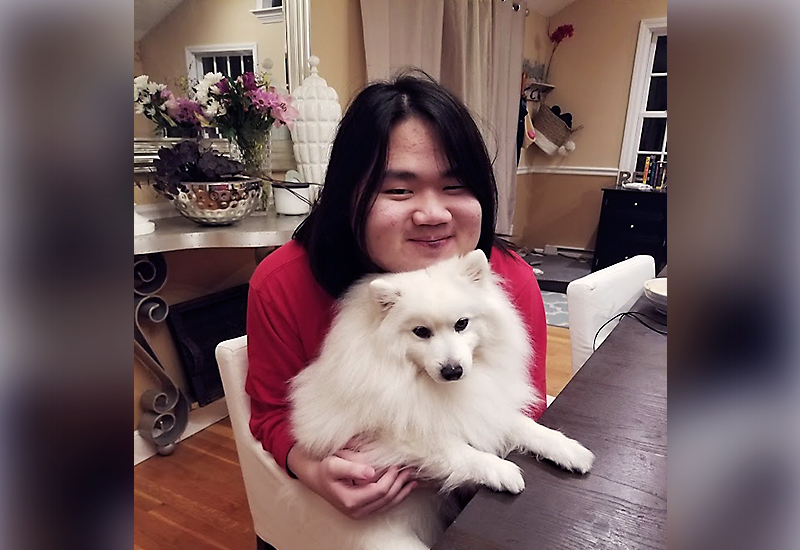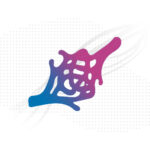Answers for Isaac: A family’s journey to treat vascular anomalies

Early on, Jinah and her husband knew their son Isaac was battling something complex, but they couldn’t figure out what it was, even after seeing numerous specialists.
Their search for answers spanned the globe and eventually brought them to the Vascular Anomalies Center at Boston Children’s Hospital. It was in Boston that they not only found help for Isaac but a new home as well.
Exhaustion and questions
The family’s journey began in South Korea, where they were living when Isaac was born in 2004 and where he was diagnosed with a hemangioma — a benign (noncancerous) tumor made up of extra blood vessels in the skin. Also known as a strawberry mark, this type of vascular anomaly usually appears within the first few weeks of a child’s life.
“He had a little red mark on his lip and his tongue,” Jinah recalls. “Our medical team said it wasn’t a big deal, so we didn’t think much of it. Our real concerns began once he started school.”
By this time, the family was living in Australia. At preschool, Isaac didn’t want to join his peers or go outside and, once he was in kindergarten, his teachers reported that he wasn’t paying attention in class.
“He was just so exhausted and couldn’t focus,” Jinah says.
In addition to his sleepiness and inability to focus, Isaac’s tongue had begun to swell, gradually reaching a point at which he couldn’t fully close his mouth.
A journey for answers
“We saw specialist after specialist, trying to figure out what was going on,” Jinah says. “Isaac was missing almost half the school year because he was so exhausted.
“Everyone was telling me I was just an overprotective mother,” she adds. “We didn’t get the help we desperately needed. This went on for years.”
When Isaac was about 11, Jinah and her husband had had enough. They pursued every resource they could think of to find a definitive answer about what was causing their son’s extreme fatigue, debilitating headaches, and the growths that had developed on his face, jaw, and tongue that would swell and bleed.
Dr. Eng and the Vascular Anomalies Center team consult on challenging cases from across the world as part of a weekly interdisciplinary conference, and partner with local providers to share their expertise on patients with complex vascular anomalies. This collaboration helps patients and their families receive the best care possible as close to home as possible.
Their persistence eventually led them to Dr. Whitney Eng, a hematologist/oncologist with expertise treating children with vascular anomalies. From there, the miles they would need to travel to find answers for Isaac meant nothing considering the time they spent feeling dismissed.
“We had no intention of leaving Australia, but we packed up and moved to Boston within three weeks,” Jinah says of coming to the Vascular Anomalies Center.
A unique anomaly with unique treatment
Isaac’s case was distinctive because of his non-specific symptoms such as fatigue and headaches, combined with the appearance of capillary, lymphatic, and arteriovenous malformations — lesions and masses caused by abnormal changes in blood vessels or tissue — the locations of which would change over time.
“When Isaac came to Boston Children’s, his symptoms puzzled us. They didn’t fit into one category,” says Dr. Eng.
Dr. Eng and the teams at the Vascular Anomalies Center and the Dana-Farber/Boston Children’s Cancer and Blood Disorders Center then performed genetic testing on some of Isaac’s biopsy tissue and were able to diagnose him with PIK3CA-related overgrowth syndrome (PROS). Patients with PROS are prone to developing malformations throughout the body, many of which can cause severe, even life-threatening issues depending on where they’re located. Dr. Eng’s work with PROS includes a study of medications originally developed to treat cancer.
Because his testing had shown the PIK3CA gene mutation, Dr. Eng suggested Isaac be enrolled in clinical trial she was leading using an oral AKT inhibitor, a drug targeting a growth pathway involved in Isaac’s vascular anomaly.
Since starting the drug, Isaac hasn’t needed surgery for the mass in his jaw, which has shrunk and stopped bleeding. He’s also experienced less pain from the other malformations of his face and seen a decrease in his fatigue, a response common among study participants.
Treating the whole Isaac
The team at Boston Children’s also worked with Isaac to evaluate his learning differences, including his inability to focus.
When he was in sixth grade, Isaac was diagnosed with autism.
“So many things came together when we heard this diagnosis,” Jinah says. “We had struggled with basic tasks with Isaac for so long. Boston Children’s guided us and helped us be more aware and confident of his care and needs.”
Although he continues to fight fatigue and headaches, today Isaac is a happy and enthusiastic high school junior. He loves school, video games, and writing.
And he continues to see Dr. Eng and the Boston Children’s team, something his mother is incredibly grateful for.
“One of the best things about Boston Children’s is that they listen. And they really do their best to take care of you,” she says. “We feel it when we’re here.”
Learn more about how the Vascular Anomalies Center at Boston Children’s Hospital works with the Dana-Farber/Boston Children’s Cancer and Blood Disorders Center to diagnose, treat, and provide ongoing care for children with vessel abnormalities that affect the capillaries, veins, arteries, and lymphatic vessels.
Related Posts :
-

Targeting treatments for vascular anomalies, courtesy of cancer genetics
Vascular anomalies — overgrowths or malformations of the capillaries, veins, arteries, and/or lymphatic vessels — often confound physicians, especially in acute ...
-

Another shot for Conner: Getting back in the game after brain surgery
Watch Conner Hicks coach basketball at Midlakes Middle School in Clifton Springs, New York, and you’ll see a young ...
-

Charlee: Bouncing back after neuroblastoma treatment
Call it mother’s intuition, but leading up to her daughter’s cancer diagnosis, Erica Jensen knew something wasn’t ...
-

‘Mosaic’ gene mutations could explain some cases of autism
The causes of autism remain mysterious. Scientists have linked autism spectrum disorder to a long list of genes, but most ...





